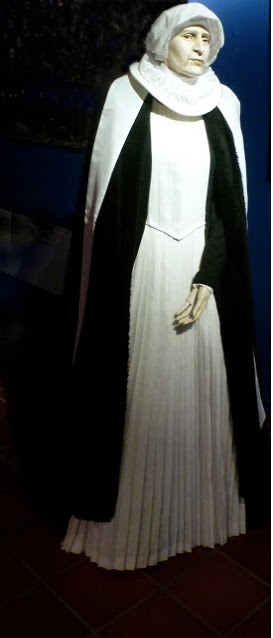The village of Thorn is located in Limburg, near Maastbracht and was once a small principality led by the abbess of the convent and her chapter of twenty ladies of the highest nobility. It had formally been a drained swamp near the Roman Road between Maastricht and Nijmegen and today it is known as the White Village for its white washed brick houses in the center of town.
Count Ansfried and his wife Hilsondis founded Thorn Abbey and their daughter Benedicta became the first Abbess of the Abbey. Later in 995 the Count became bishop of Utrecht. In the crypt of the Abbey are the remains of Hilsondis and Benedicta.
The ladies were of the highest nobility and had to have proof of their pedigree. It was also a place for the nobility to house their unmarried daughters. Two sisters Clara Elisabeth of Manderscheidt-Blankenheim and her sister Anna Salome of Manderscheidt-Blankenheim were both Abesses of the abbey. Clara was known as the "ill lady" and suffered from disease all her life.
Previously the abbess and the chapter were endowed with clerical tasks as it was originally a convent of the order of the Benedictines. Since the twelve century, it developed into a secular order and became a convent community for women and at its peak included twenty female canons. They still wore the nuns habit and were involved with the local community. The Vatican did not approve of them wearing the habit and asked for them to change to lay clothing. They refused the request.
They formed the government of a genuinely sovereign miniature principality the smallest independent state in the German Holy Roman Empire approximately 250 x 250 meters. They lived in harmony and six canons performed liturgical services. The female canons lived in a large complex of convent buildings from which only the church remains.
After the beheading of Marie Antoinette in 1793 and with the French invasion in the winter of 1794-1795, its inhabitants fled, leaving behind their homes. Most houses were destroyed by the French and the have-nots of the area started to move into the large vacant homes. The French applied a window tax, based on the size of the windows, which the new occupants could not afford. They bricked in the windows and covered it up by whitewashing the walls.
In 1797 marked the end of the miniature principality of Thorn that had lasted for eight hundred years, run by women without the need for fortification, ramparts or a moat. It later became a municipality of The Kingdom of the Netherlands.
Many alterations have since been made to the church and its now baroque interior has been painted white giving the church once more a feminine touch.






No comments:
Post a Comment